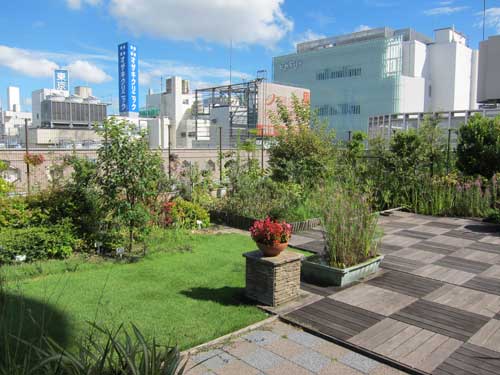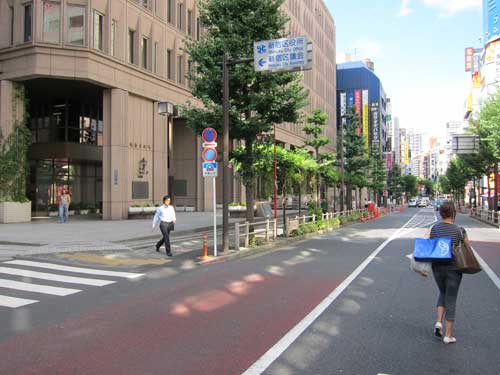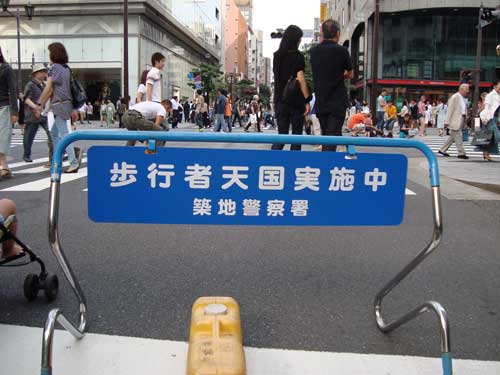
A friend told me to check out this green “bus stop” between Kabukicho and Hanazono Shrine. This incredible vine providing shade for the sidewalk is no longer a bus stop, but is in front of Shinjuku’s ward office. As I’ve written before, the wards seem to be leading Tokyo Metropolitan Government and the national government in creating innovative green spaces on their properties.

What’s great about this sidewalk awning is that it requires minimal space and maintenance, yet impacts thousands of people coming to the ward office, or just passing by on this busy street. Two very kind city workers involved with green space took time out to talk with me about the sidewalk, facade, and roof greening.
The sidewalk awning is a combination of two hardy vines: nozenzakura (ノウゼンカズラ in Japanese or Campsis grandiflora in Latin) with orange flowers, which I have seen in my neighborhood blooming all summer.

The other vine is akebi (アケビ, also called Akebia in English), which flowers and fruits. Wikipedia says that it is frequently mentioned in Japanese literature and evokes images of pastoral landscapes; it’s also considered an invasive in New Zealand and parts of the United States. Here in the heart of Shinjuku, it’s a very attractive shade plant with the added bonus of having distinct seasons.

It was nice to see that parts of the facade have vertical plantings, although a simple full facade retrofit would modernize and make more attractive the 1960s building.

The city workers also showed off the roof garden, which has different areas including edibles, herbs, and water plants. It was sad that most of the usage seems to be a place for smokers to congregate. I wonder how they can make the space more attractive for non-smoking workers and neighbors.


It would be cool to see a complete redesign of the entire usable surface of the ward office to eliminate the dead space. Too much of the facade is monotonous concrete with minimal pattern, and too much of the plaza in front and along the side is hard surfaces. A redesign could capture the imagination of residents, retailers, and office owners.



